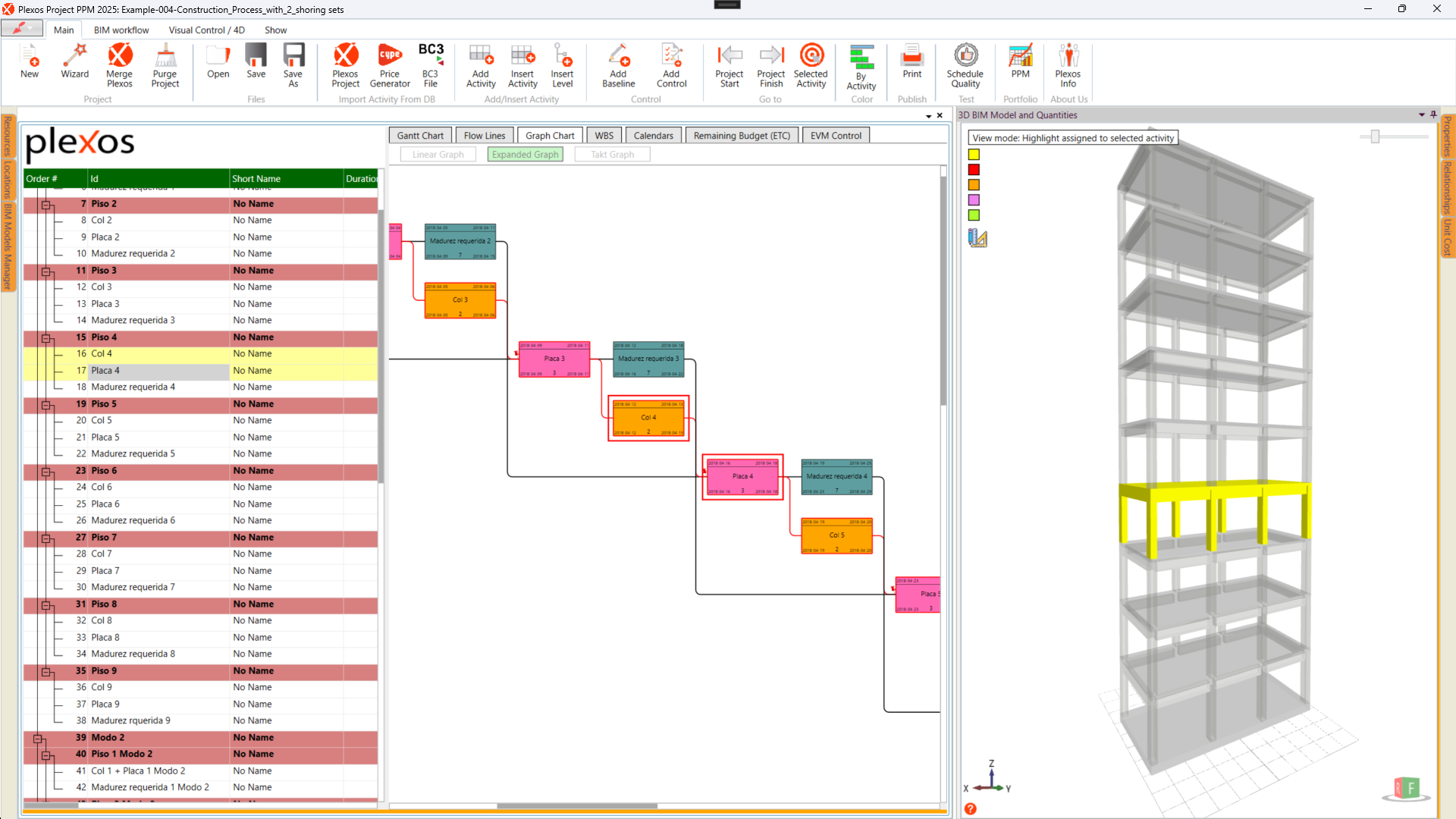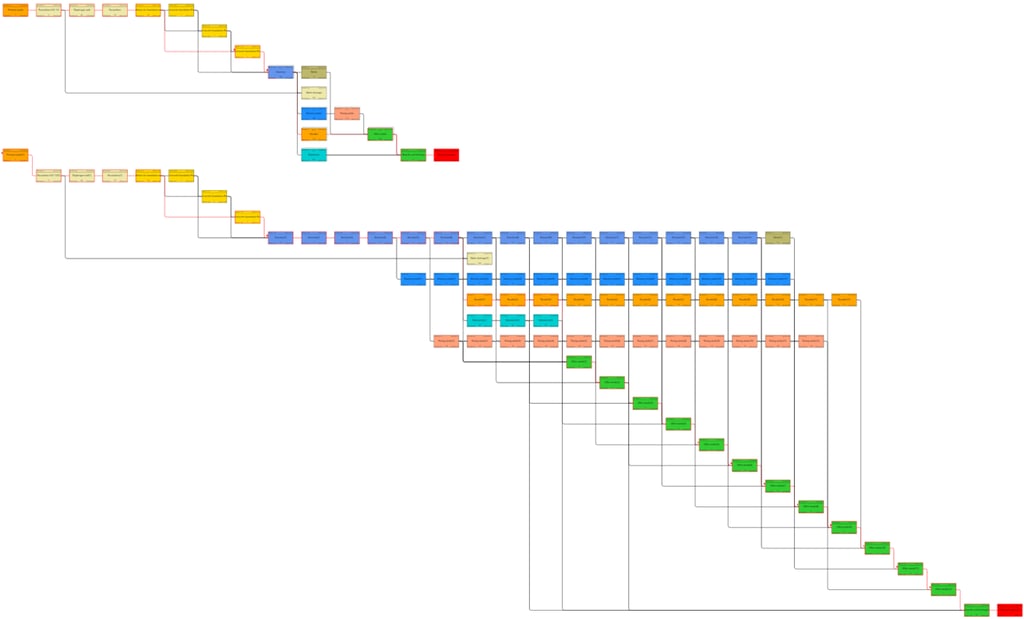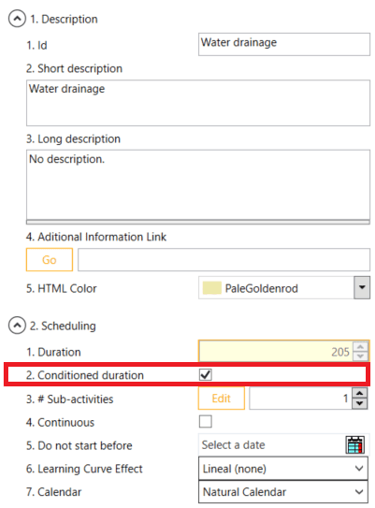
Takt Planning with Sub-activities
This is the example of implementation of the algorithm for Takt-Planning and cycles with repetitive activities proposed by Ponz Tienda et al (2015), in which is mainly based the algorithms used by Plexos project, useful to show some of the differences between Lean project scheduling and the traditional method, showing the implementation of the Takt-Planning algorithm with repetitive activities, as proposed by Ponz Tienda et al. (2015).
This work inspired the foundations of Plexos Project, and highlights the key differences between Lean project scheduling and traditional methods.
The example consists of a 15-story building with three underground levels and twelve above-ground floors. The 'water drainage' system must work uninterruptedly until construction reaches at least the sixth floor. This is because the weight of the rising structure helps counteract water pressure. Consequently, the duration of 'water drainage' is an unknown variable, contingent upon the pace of construction and the specific characteristics of the building structure.
The concrete for the foundations will be poured in three overlapping phases, concurrently with the installation of reinforcement bars. The structure's construction involves 15 repetitive sub-activities, overlapping with masonry, facade, and basement work. A 12-day lag is incorporated after each concrete pour to allow for proper formwork removal and concrete curing.
Figure 1. Lean vs traditional approach graph




Figure 2. Lean vs traditional approach WBS
In both cases, the 'water drainage' activity employs a 'conditional duration', defined within the scheduling properties panel, that must comply to the following criteria (Figure 3):
Minimum Activity Duration: The activity must span at least two days.
Conditioning Relationship: The Finish-to-Finish relationship, which establishes the completion of the activity, must be set on production levels or workdays. Furthermore, the duration of this conditioning relationship must be greater than zero.


Figure 4. Calculated duration for conditioned duration
Observe that the duration text box in Figure 6, initially editable, now displays a computed value and is disabled. This reflects the calculated duration based on the continuous execution of the activity, determined by its start and finish dates.


Figure 3. Conditional duration conditions
Significantly fewer activities and relationships are needed under the lean approach compared to the traditional method. The lean schedule involves only 18 activities and 26 relationships, whereas the traditional approach requires 78 activities and 139 relationships.


While both scheduling approaches yielded identical project durations, the Lean methodology demonstrated superior outcomes, producing more concise and easily interpretable schedules, and guarantying a more harmonious project flow.
References:
Ponz-Tienda et al. (2015), The Fuzzy Project Scheduling Problem with Minimal Generalized Precedence Relations. Computer-Aided in Civil and Infrastructure Engineering, 30: 872-891. DOI:10.1111/mice.12166
García-Nieves, Ponz-Tienda, Salcedo-Bernal, Pellicer (2018), The Multimode Resource-Constrained Project Scheduling Problem for Repetitive Activities in Construction Projects. Computer-Aided Civil and Infrastructure Engineering. DOI:10.1111/mice.12356
Figure 5. Project Graph for the Lean way


